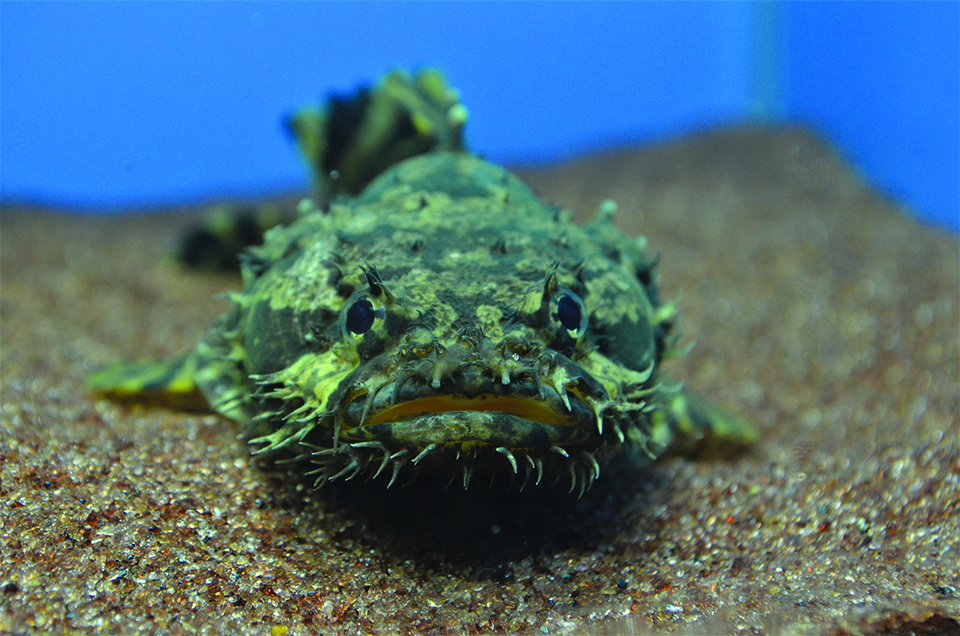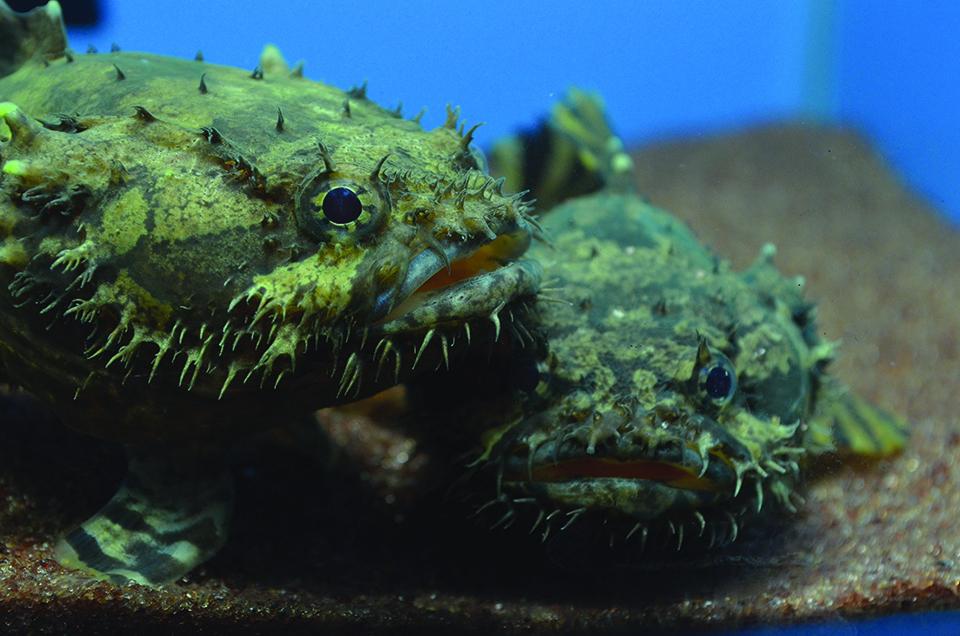GETTING TO KNOW ALLENBATRACHUS GRUNNIENS

If you fancy yourself as someone who likes Fishes just like I do, then you will find the Allenbatrachus grunniens quite fascinating. While most people might find this Fish bizarre-looking and unusual, someone who looks beyond the usual standards will find this species beautiful and adorable, especially because they are seldom encountered.
The A. grunniens is a predatory Fish found in freshwater, brackish and marine water systems in India and Bangladesh and extending to the coastlines of Myanmar, Thailand, Malaysia, Cambodia, Vietnam, and the Philippines. So, they are native to our country. They are oftentimes seen in the freshwater aquarium because of their ability to withstand a wide range of salinity levels. Although it is possible to keep them in pure freshwater, it is better to add some salt at about 5 to15 grams per liter.
This Fish was first described by Swedish botanist, zoologist, taxonomist, and physician Carl Linnaeus in 1758.
The A. grunniens is a ray-finned Fish from the order Batrachoidiformes, belonging to the family Batrachoididae or the Toadfishes. They are given the scientific name, Allenbatrachus grunniens. The A. grunniens has a host of common names. From the description above, you will not be surprised that they are commonly known as the Freshwater Toadfish or Grunting Toadfish. Others also call them the Freshwater Lionfish owing to the similar appearance to the marine Fish, the Lionfish.
LET’S GET READY TO RUMBLE!
The genus name is derived from the combination of the name Allen in dedication to Australian taxonomist George Allen, and Greek word Batrachus, meaning frog, hence the genus name Allenbatrachus. The species name is grunniens, which means “the grunter”, owing to the unusual sound they create when threatened.
In fact, this grunting sound is really audible. Try catching one and you can clearly hear the grunting of this Fish as the sound resonates from your aquarium. Honestly, “grunting” is a polite way of describing the deep rumbling sound it makes. The sound they create sounds more gastronomical, if you ask me.

CAMOUFLAGEDWADDLER
The body and fins of the A. grunniens are covered by a camouflaged pattern of light and dark brown blotches. They also have a lot of weed-like appendages around the mouth, face, head, and body to conceal them even further. They look like a piece of wood or rock with some kind of vegetation on it. They mostly just sit at the bottom and hidden from view. With a wide mouth and large eyes, you can deduce that this is an ambush predator who simply waits at the bottom for an unsuspecting prey to swim by.
They move slowly and most of the time stay motionless. Their movement is best described as a waddle more than a swim, and their movement is a short hop of a few inches. But if danger arises, they are able to dart quickly to escape. You might find them zipping across the tank while making the grunting sounds, panicking to escape your fish net if you’re trying to isolate them during tank cleaning.
LIVING CONDITIONS
The A. grunniens is said to grow to a maximum size of 12 inches, although most of those kept in captivity in the country grow to only about 5 to 6 inches long. They are a medium to large Fish, so a minimum tank size of 35 gallons is a must for one or two Fishes. The tank should also have an adequate filter since this is a carnivorous Fish who is expected to create a lot of bioload. Frequent water change should also keep water parameters in check. It is recommended to have 40% water change weekly.
Being a Fish who can tolerate marine conditions, the A. grunniens prefers water on the alkaline and hard side of the spectrum. A pH of 7.5 – 9.0 and water hardness of 268 – 447 ppm suit the them just fine.
Although ambush predators, they can be kept with other Fishes as they are not really aggressive and territorial. Tankmates, however, must be big enough not to be seen as prey. Of course, slow moving and small Fishes are naturally on the menu. Unless these will not be offered as food for the A. grunniens, don’t keep small Fishes in the same tank.

CARE AND CAUTION
The A. grunniens is not the easiest Fish to keep. On a scale of 1 to 10 with 10 being the most difficult to care for, I would give them a rating of 8. They can be a challenge to keep, and some concerns will have to be taken into consideration.
THEY PREFER BRACKISH WATER
First, while they may survive in pure freshwater, it would probably be best to keep them in brackish water conditions with a salinity range of 0.5 to 35 ppt or a specific gravity of 1.0004 to 1.0015.
THEY ARE LOW-KEY PREDATORS
Secondly, since they mainly just sit and wait for their prey to come near them, feeding will be a problem if they share the same tank with open water predators. They simply cannot compete with the more aggressive predators who will probably get to the live food first. Thus, it might be better to keep them in a species tank or probably keep with Fishes who do not eat live fish. Archerfishes would certainly be good tankmates as they readily feed with commercial food and mostly just stay at the top parts of the tank.
THEY HAVE VENOMOUS SPINES
Be careful when handling the A. grunniens since the dorsal spines and the spines on the opercle are poisonous. Generally speaking, the venom is not very strong, but it will certainly leave you with a painful jab that may also result in you having a fever or an allergic reaction.
Caring for A. grunniens may be a challenge. I certainly will not recommend this to a newbie since they can be quite difficult to provide care for. But for someone who has the experience, caring for them can be quite exciting.They are exotic looking Fish whom you won’t commonly encounter. Quite frankly, they might not even look like Fishes, but like monsters from the murky waters of the deep!
If you have any questions or inquiries about the Fish mentioned above, or if you wish to feature your Fish in this column,please write Angel Ampil at [email protected].






